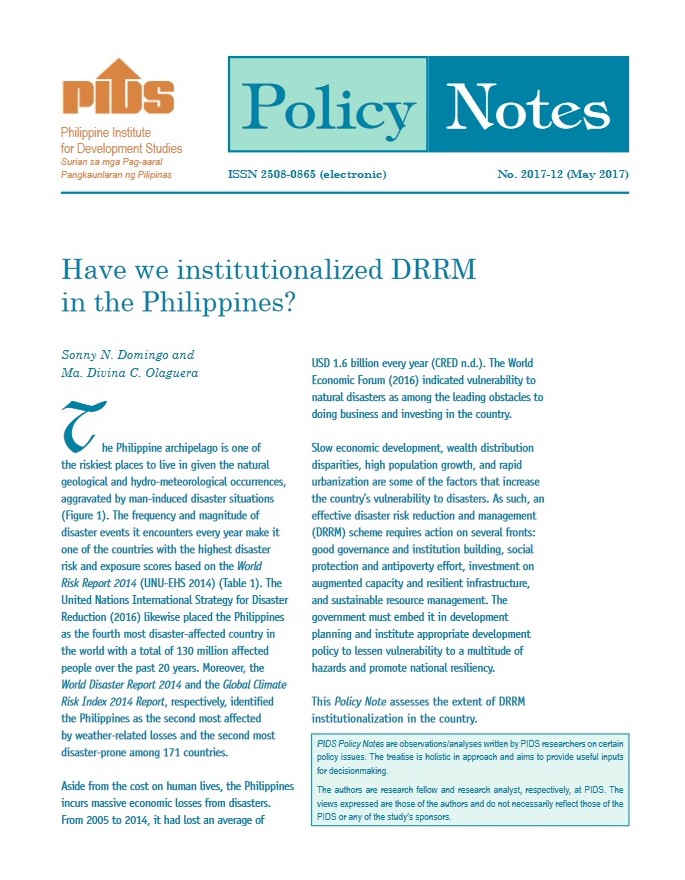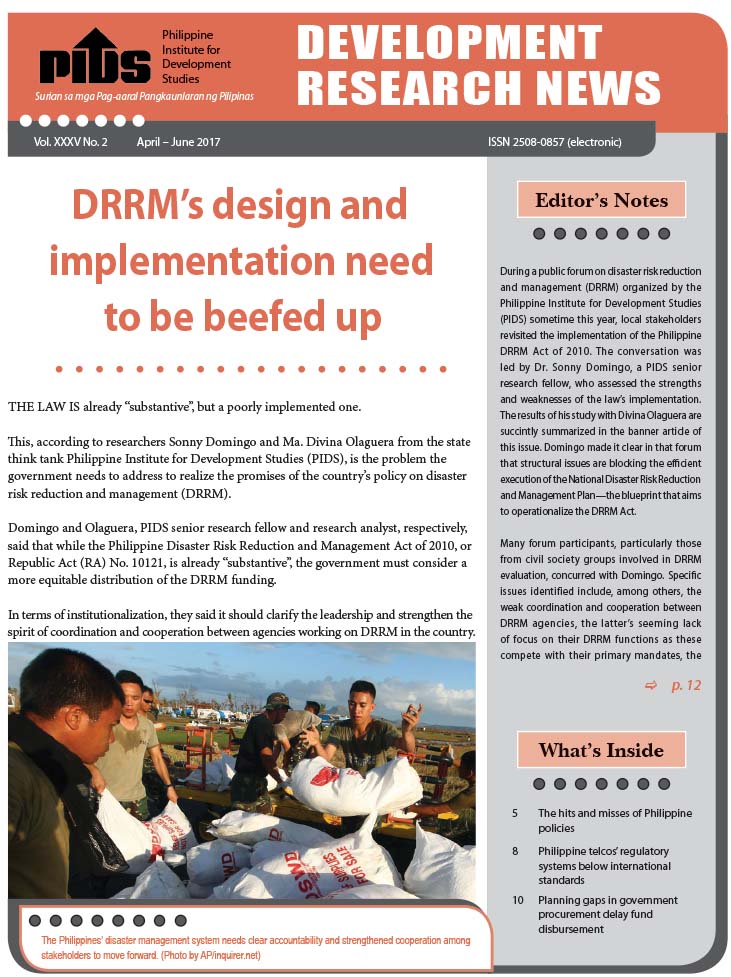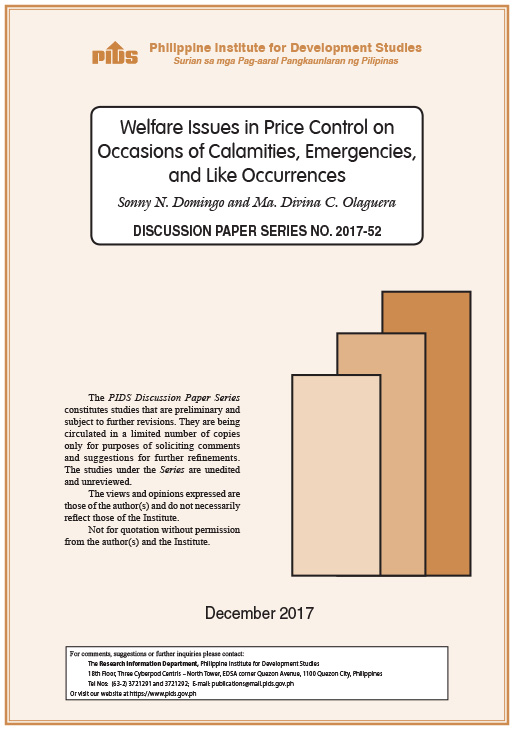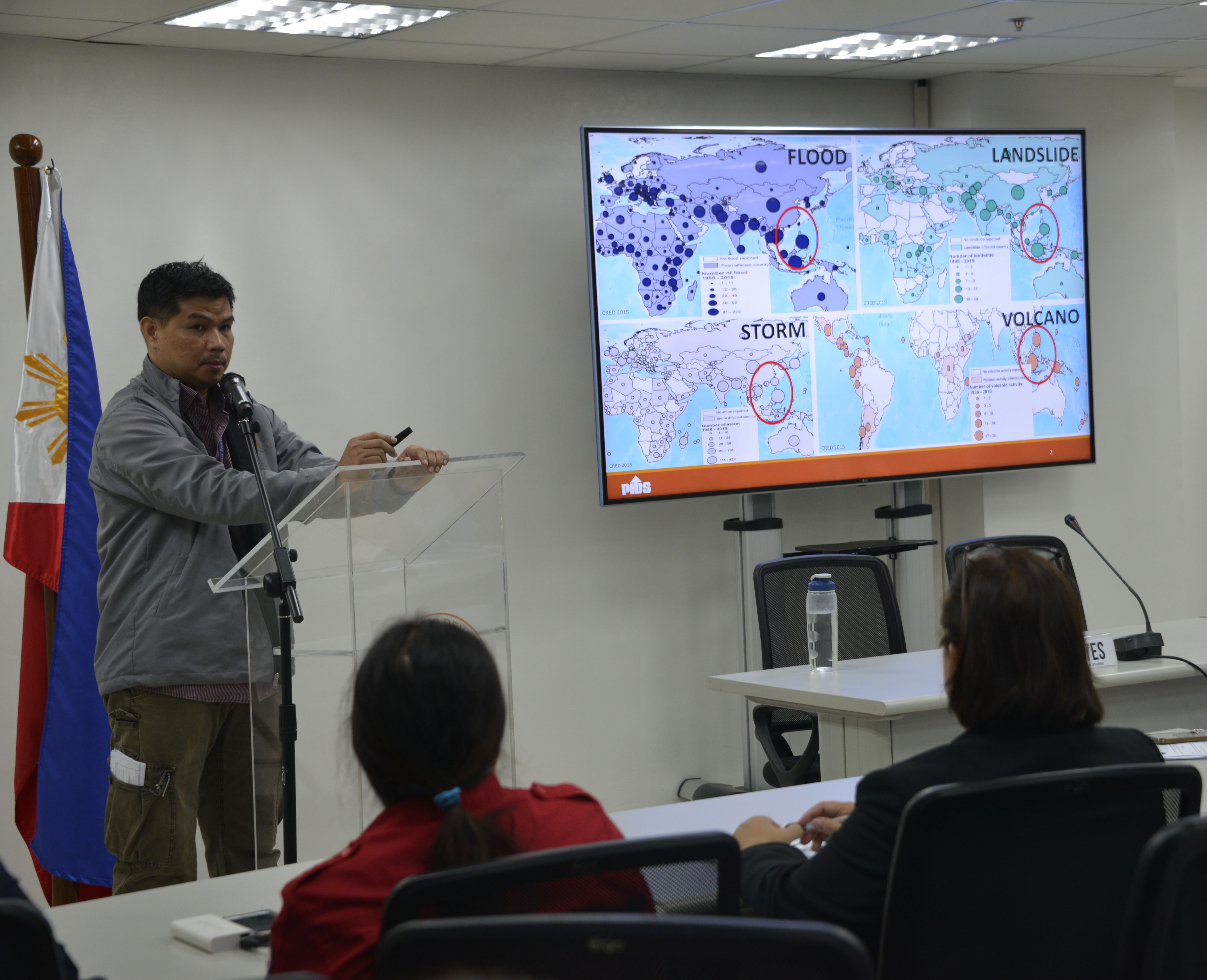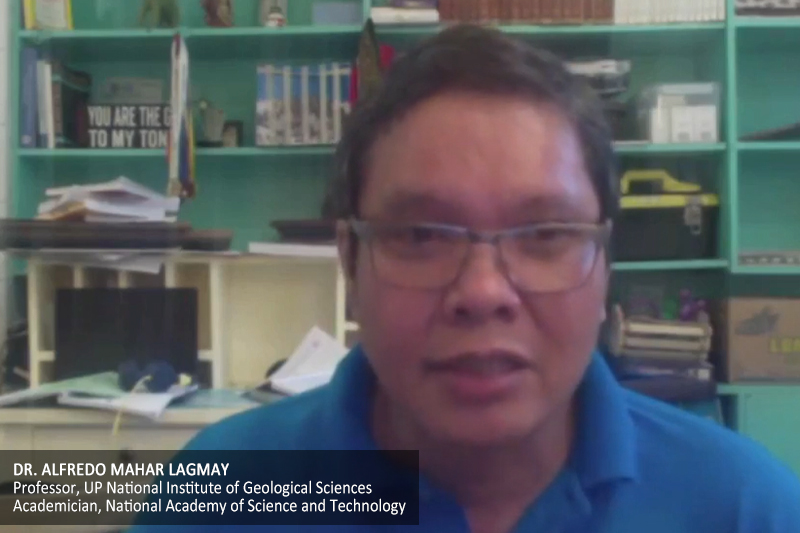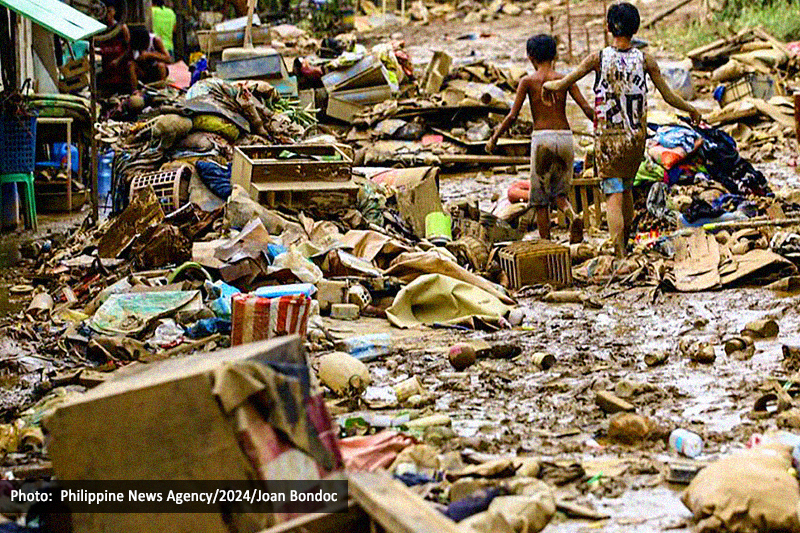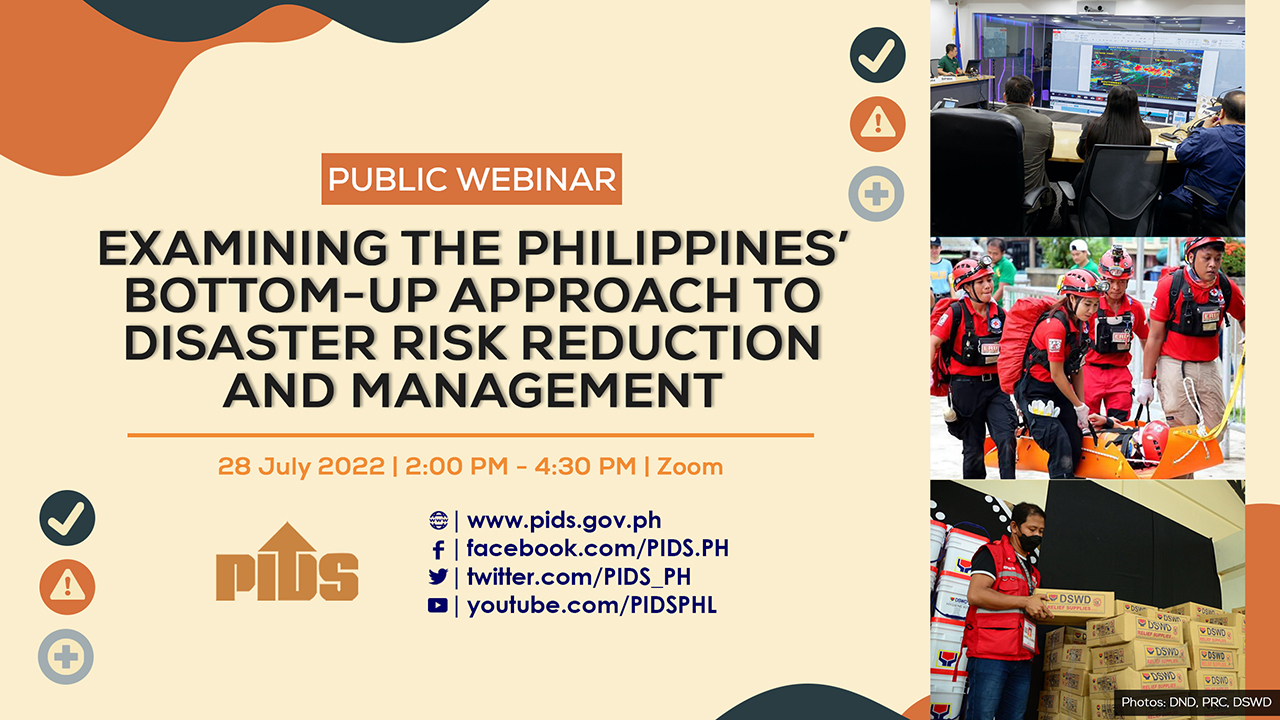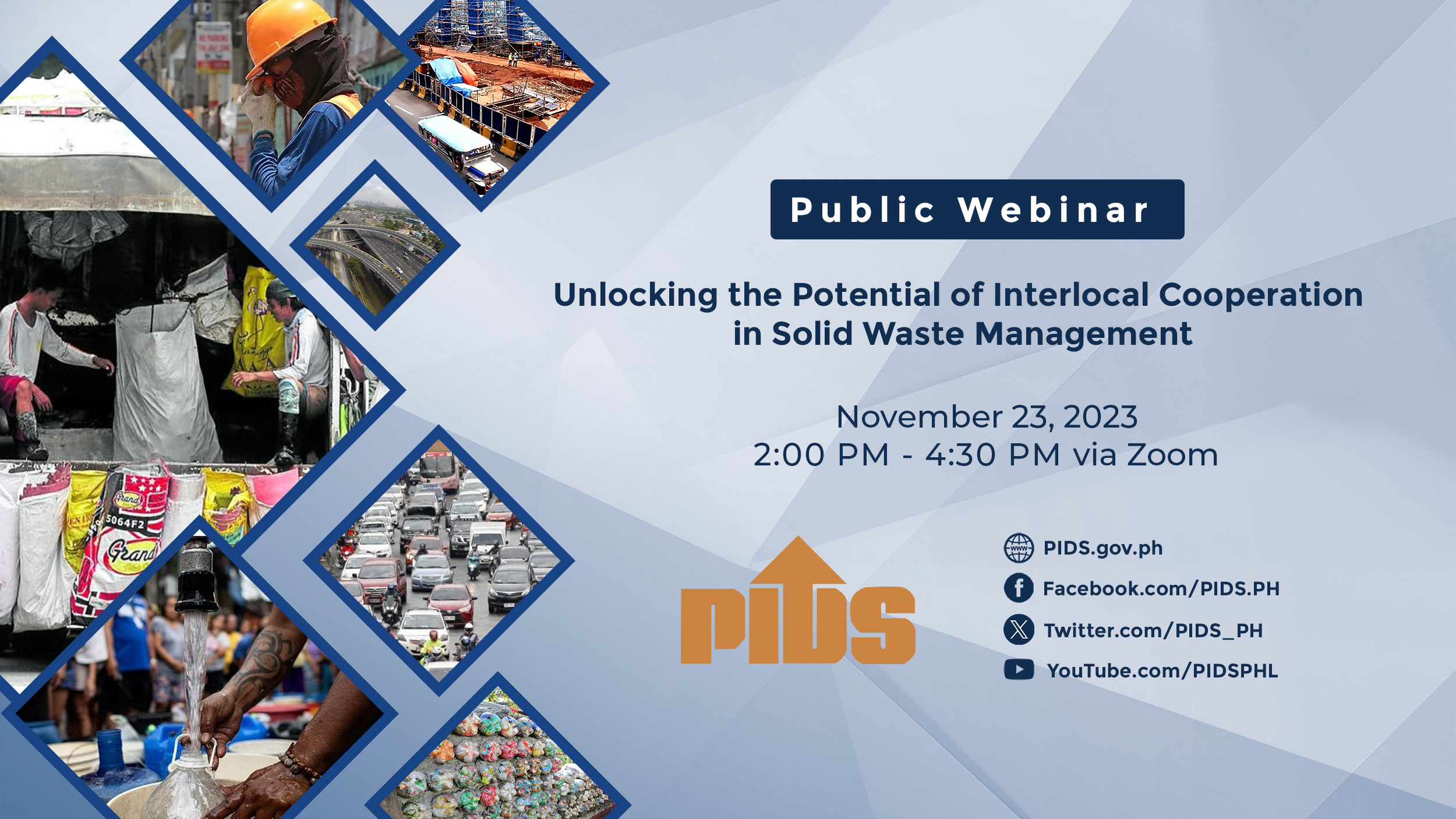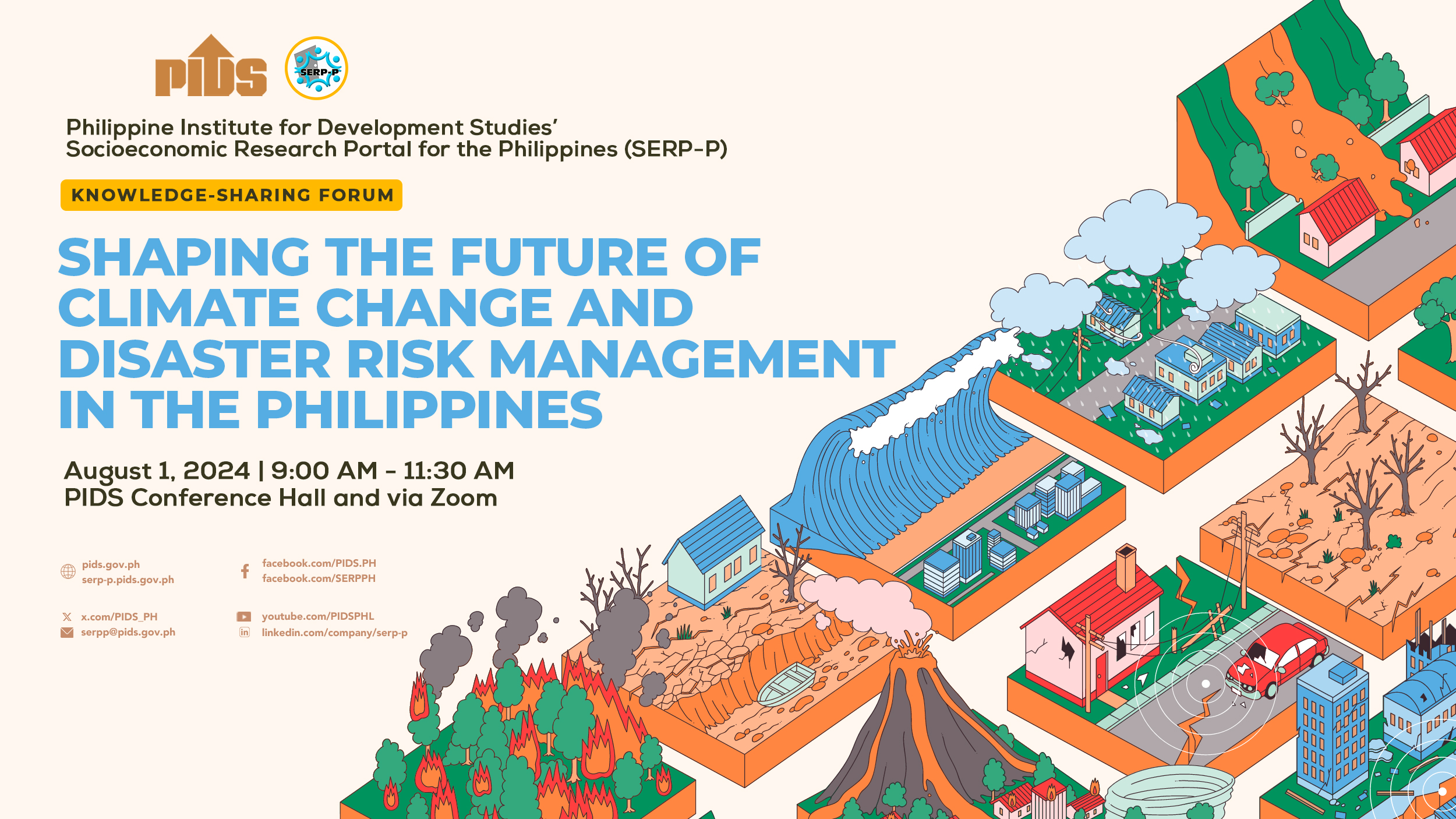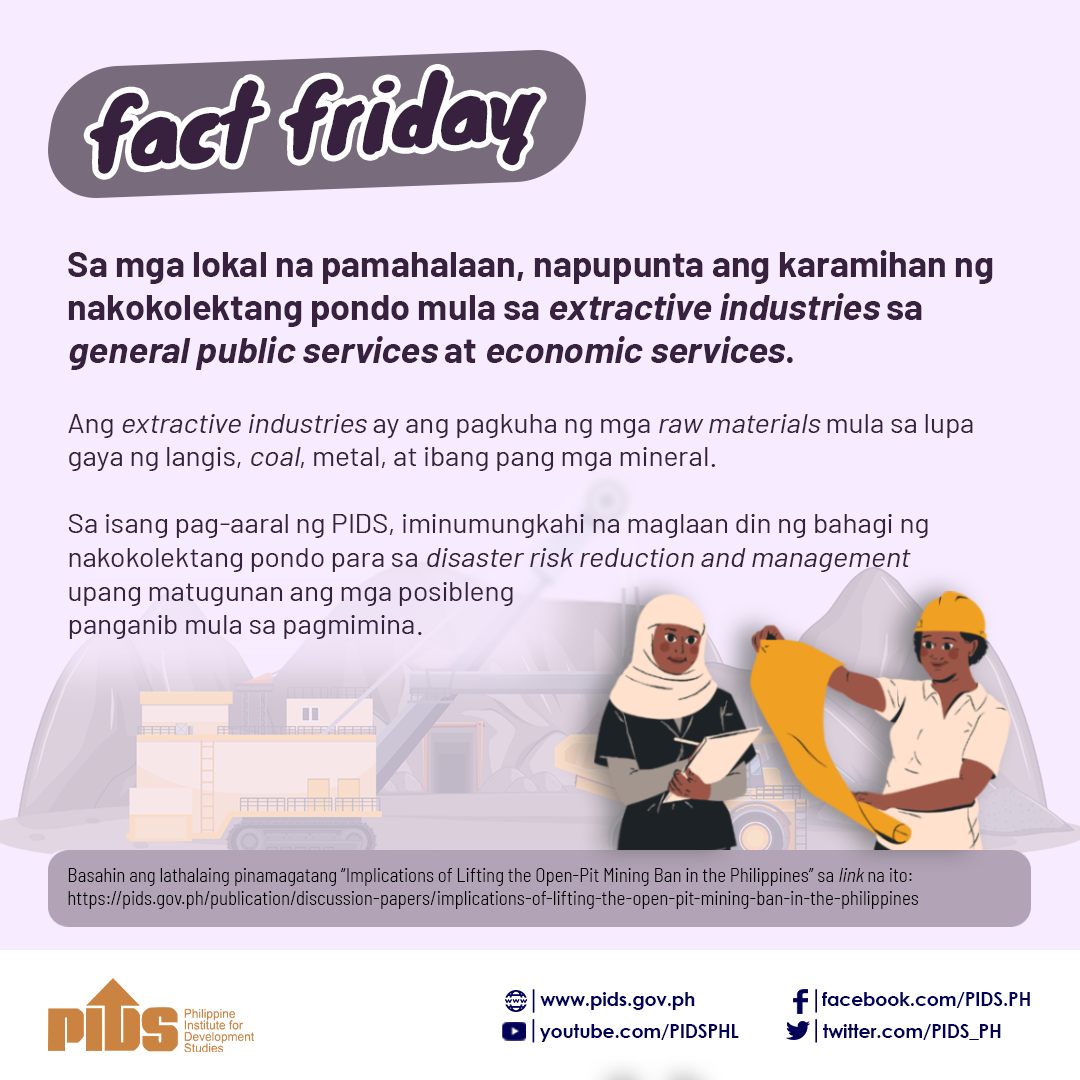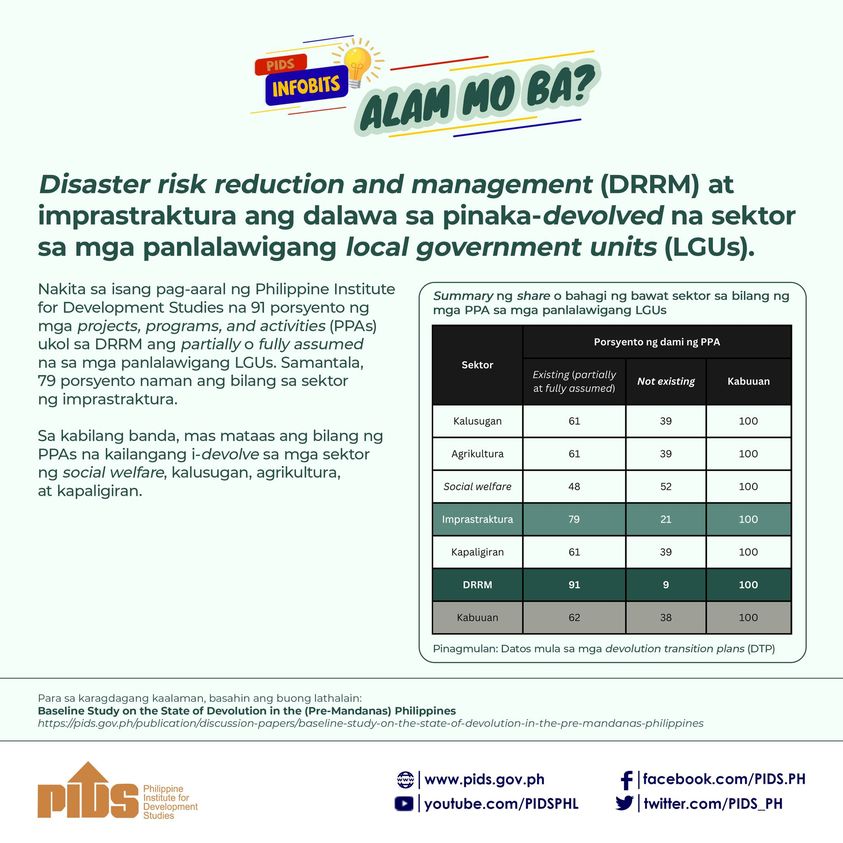Following the conclusion of the 3rd United Nations World Conference on Disaster Risk Reduction, hosted by Japan last March, the Philippine Institute for Development Studies (PIDS) offers relevant input on how the country`s decisionmakers can improve the Philippines` disaster risk reduction and response framework.
Drs. Marife M. Ballesteros and Sonny N. Domingo, research fellows at PIDS, argue that despite the fact that the Philippines has an elaborate framework for disaster risk reduction management (DRRM), there is a critical `gap in policy execution`. This gap leaves sectors like micro, small, and medium enterprises (MSMEs) to suffer crippling economic loses when disasters strike. The authors believe that the problem lies in a number of things, which can be summed up as the ineffective translation of the national framework into localized and sectoral plans.
Their discussion paper, titled Building Philippine MSMEs Resilience to Natural Disasters, reviewed the current policy environment and the best international practices, then offers strategies for localizing the DRRM framework and embedding its principles in the business sector.
The Philippines is the third most disaster-prone country in the world. According to a 2013 UNDP report cited by the authors, local businesses are crippled by disasters beyond recovery. MSMEs lose out the most, which is alarming because their continuity and resilience are vital to national development.
There are current laws and national development plans that appear relevant and conducive to encouraging MSMEs to create measures for business continuity and resilience. But the authors insist, `there is a need to review and translate national frameworks and development plans into workable subnational and sectoral plans.`
Localized strategies must specifically target business resiliency and cover context-specific vulnerabilities.
As it stands, MSMEs are less likely to avail of risk management tools provided by the government, primarily because they are often informal and noncompliant with industry norms and regulation. In post-disaster scenarios, MSMEs have little access to the available resources for recovery, forcing them to rely on informal loans, family loans, remittances, or to simply stop operating altogether.
There are weaknesses that are external to MSME control, such as the government`s uneven focus on prioritizing response capabilities, at the expense of prevention measures. This particular shortcoming also augments the issue that the current DRRM framework is `traditional`, in that it remains far too focused on household and individual recovery, and has yet to be translated specifically for the benefit of building economic resilience among the MSMEs.
Adding to the review of the DRRM policy framework, the authors reviewed the best international practices that the Philippines can replicate to develop business continuity plans and resilience. Some of these involved managing risks and building organization resilience to disaster and postdisaster response, recovery and rehabilitation, and regional cooperation for ensuring business continuity and supply chain resilience.
The authors specify policy and program recommendations that the government can use to help MSMEs approach its wanting disaster resilience on three fronts: `organization capacity build-up, policy and institutional support tacking socioeconomic drivers of risks in pre-disaster stage, and prompt and sustained economic restoration and support efforts in the aftermath of disaster`.
They also propose practical strategic options for preparing the business environment for before and after scenarios.
In the predisaster stage, the authors propose that the government, private sector, and MSMEs focus on strengthening supply chains by making predisaster agreements with relevant stakeholders. They also suggest that the government inform entrepreneurs of the hazards of their business locations and safety measures they can undertake, and to create `a culture of adaptive capacity among management and employees`, whereby everyone, through enhanced business networks, training, better work relationships, and other such means, becomes resilient to the interruptive impact of disasters.
After disasters, it is important to have the measures to enable businesses to recover and normalize immediately, but also to make it easier for them to rehabilitate their operation for the long term. Some of the ideas the authors proposed include the quick address of damages to public services and key infrastructures, humanitarian assistance and recovery workshops for the local workforce, the application of special grants of incentives for businesses to participate in clean-ups and repairs, tax reprieves, and access to specially-restructured loans and capital for rehabilitation.
The authors underscored the importance of cooperation among the government, private sector, and MSMEs because the losses do not stop with MSMEs. A production network involves many participants, with supply chains becoming increasingly more global. A break in the supply line sets back all of them. There must be collaborative commitment from the private sector, government, and the MSMEs themselves, to make economic activities resilient through all phases of disaster.
You may download the full study from this link: http://dirp3.pids.gov.ph/webportal/CDN/PUBLICATIONS/pidsdps1520.pdf
Drs. Marife M. Ballesteros and Sonny N. Domingo, research fellows at PIDS, argue that despite the fact that the Philippines has an elaborate framework for disaster risk reduction management (DRRM), there is a critical `gap in policy execution`. This gap leaves sectors like micro, small, and medium enterprises (MSMEs) to suffer crippling economic loses when disasters strike. The authors believe that the problem lies in a number of things, which can be summed up as the ineffective translation of the national framework into localized and sectoral plans.
Their discussion paper, titled Building Philippine MSMEs Resilience to Natural Disasters, reviewed the current policy environment and the best international practices, then offers strategies for localizing the DRRM framework and embedding its principles in the business sector.
The Philippines is the third most disaster-prone country in the world. According to a 2013 UNDP report cited by the authors, local businesses are crippled by disasters beyond recovery. MSMEs lose out the most, which is alarming because their continuity and resilience are vital to national development.
There are current laws and national development plans that appear relevant and conducive to encouraging MSMEs to create measures for business continuity and resilience. But the authors insist, `there is a need to review and translate national frameworks and development plans into workable subnational and sectoral plans.`
Localized strategies must specifically target business resiliency and cover context-specific vulnerabilities.
As it stands, MSMEs are less likely to avail of risk management tools provided by the government, primarily because they are often informal and noncompliant with industry norms and regulation. In post-disaster scenarios, MSMEs have little access to the available resources for recovery, forcing them to rely on informal loans, family loans, remittances, or to simply stop operating altogether.
There are weaknesses that are external to MSME control, such as the government`s uneven focus on prioritizing response capabilities, at the expense of prevention measures. This particular shortcoming also augments the issue that the current DRRM framework is `traditional`, in that it remains far too focused on household and individual recovery, and has yet to be translated specifically for the benefit of building economic resilience among the MSMEs.
Adding to the review of the DRRM policy framework, the authors reviewed the best international practices that the Philippines can replicate to develop business continuity plans and resilience. Some of these involved managing risks and building organization resilience to disaster and postdisaster response, recovery and rehabilitation, and regional cooperation for ensuring business continuity and supply chain resilience.
The authors specify policy and program recommendations that the government can use to help MSMEs approach its wanting disaster resilience on three fronts: `organization capacity build-up, policy and institutional support tacking socioeconomic drivers of risks in pre-disaster stage, and prompt and sustained economic restoration and support efforts in the aftermath of disaster`.
They also propose practical strategic options for preparing the business environment for before and after scenarios.
In the predisaster stage, the authors propose that the government, private sector, and MSMEs focus on strengthening supply chains by making predisaster agreements with relevant stakeholders. They also suggest that the government inform entrepreneurs of the hazards of their business locations and safety measures they can undertake, and to create `a culture of adaptive capacity among management and employees`, whereby everyone, through enhanced business networks, training, better work relationships, and other such means, becomes resilient to the interruptive impact of disasters.
After disasters, it is important to have the measures to enable businesses to recover and normalize immediately, but also to make it easier for them to rehabilitate their operation for the long term. Some of the ideas the authors proposed include the quick address of damages to public services and key infrastructures, humanitarian assistance and recovery workshops for the local workforce, the application of special grants of incentives for businesses to participate in clean-ups and repairs, tax reprieves, and access to specially-restructured loans and capital for rehabilitation.
The authors underscored the importance of cooperation among the government, private sector, and MSMEs because the losses do not stop with MSMEs. A production network involves many participants, with supply chains becoming increasingly more global. A break in the supply line sets back all of them. There must be collaborative commitment from the private sector, government, and the MSMEs themselves, to make economic activities resilient through all phases of disaster.
You may download the full study from this link: http://dirp3.pids.gov.ph/webportal/CDN/PUBLICATIONS/pidsdps1520.pdf

